PCB 製造における IPC-6012 と IPC-A-600 の重要性
IPC (Institute of Print Circuits) は、PCB および電子機器アセンブリ業界にサービスを提供する世界的な業界団体です。 IPC は、いくつかの検査ガイドラインを実施することにより、製造された PCB および PCBA の品質を検証します。 IPC には、PCB メーカーが PCB を製造する際に遵守しなければならないガイドがいくつかあります。最も主要な IPC ガイド ドキュメントは、IPC-6012 と IPC-A-600 の 2 つです。 IPC-6012 は、リジッド PCB の認定および性能仕様を扱います。一方、IPC-A-600 は、PCB の許容性に触れています。最近では、IPC-A-600 が最も頻繁に使用され、広く受け入れられているドキュメントのようです。この記事では、PCB の製造における IPC-6012 と IPC-A-600 の重要性を強調しています。
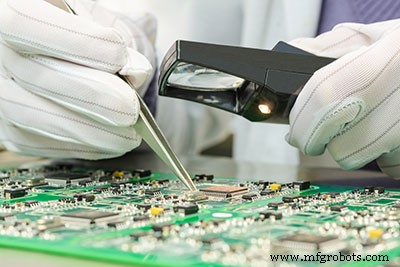
1.IPC とは?
Institute of Printed Circuits (IPC) は、電子相互接続の業界を指導する評判の高い国際組織です。これは、この業界でビジネスを行う企業が従わなければならない変更と基準を通じて行われます。 IPC は献身的な協会であり、会員企業は 4,000 社を超えています。
Institute of Printed Circuits は、設計、PCB 製造、電子機器の組み立て、最終テストなど、業界の基本的な要素/次元を代表しています。 Institute of Printed Circuits はメンバー主導の団体です。このため、業界標準、市場調査、トレーニング、および公共政策擁護の情報源として機能します。
さらに、Institute of Printed Circuits は、世界のエレクトロニクス産業における 2 兆米ドル近くのニーズを満たすいくつかのプログラムをサポートしています。 1957 年に設立され、イリノイ州に拠点を置く IPC は、PCB メーカーが常に準拠しなければならないいくつかの PCB 規格をその下に置いています。

(IPCのハイテク写真)
2.なぜ IPC 検証を実施する必要があるのですか?
PCB の設計を試みて製造業者に送ったのに、IPC 規格を無視したために製造できなかったという経験はありませんか?これは、多くの PCB 設計者がほぼ毎日直面している問題であるため、あなただけではありません。ボードの生産を遅延や問題なく確実に行いたい場合は、IPC 基準に準拠する必要があります。
では、なぜ IPC 基準が重要なのでしょうか?
IPC 規格に準拠する必要はありますか? IPC 規格が重要である根本的な理由がいくつかあります。まず、IPC 規格は、設計者や製造業者が製品を製造するまでの時間を大幅に節約するのに役立ちます。 IPC 検証を実施することで、設計者と PCB メーカーは、リコール イベントで再作業するために必要な時間を大幅に節約できます。
さらに、信頼性が高く安全で高性能な PCB を製造するには、製造プロセス全体で細部への注意と品質への取り組みが必要です。 IPC 規格に準拠することで、プリント回路基板はこれを非常に簡単に実現できます。企業が顧客の期待に応えるか、それ以上の信頼できる高品質の製品を製造するには、IPC 規格への準拠が必要です。
IPC 規格に準拠することで、企業は製品の品質と信頼性の向上から利益を得ることができます。
そのようなことは、今度は、企業の競争力と収益性を高めます。さらに、コミュニケーションの向上にもつながります。これらの標準に準拠することにより、企業は社内外のコミュニケーション チャネルを改善します。 IPC 標準は、設定された期待に同意しながら、全員が同じ用語を使用することを保証します。
また、IPC 規格に準拠することにより、PCB サービス プロバイダーを修正します。ありがたいことに、さまざまな PCB 製造会社が PCB 製造コストの削減を保証しています。品質が向上し、誤解が生じるため、やり直しや遅延が発生する可能性はほとんどありません。 IPC 規格は、新しい機会に加えて、会社の評判の向上ももたらします。 IPC などの国際的に認められた基準に準拠することで、会社は即座に信頼を得ることができます。
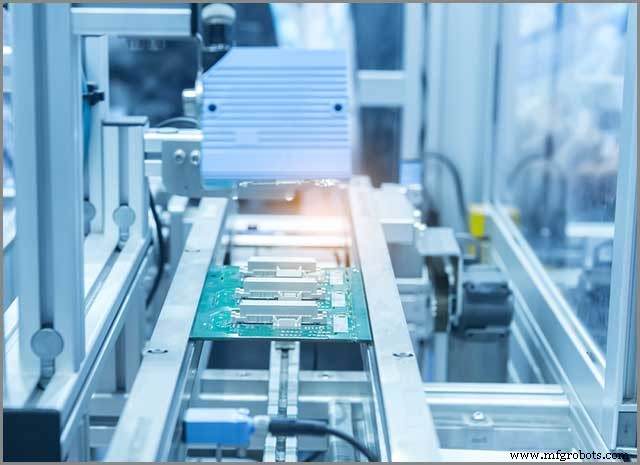
(マイクロチップ生産工場)
3. PCB 製造のための IPC アセンブリ標準
PCB メーカーが常に準拠しなければならない IPC 規格は数多くあります。ただし、前述のように、最も広く使用され受け入れられているのは IPC-A-6012 です。覚えていれば、IPC-A-6012 は電子アセンブリの許容性を扱っています。すべての IPC 標準は必須ですが、目の前の状況に関係なく無視できないものもあります。しかし、これは、残りが役に立たない、または重要な注意に値しないことを意味するものではありません.最も基本的なものには次のものがあります:
IPC-6012 – リジッド プリント基板の認定および性能仕様
IPC 6012 は、HDI およびパッシブ/アクティブ PCB の要件の性能と認定を確立および定義するために先立って策定された規格です。これらの基準は、クラス 1、2、3、および 3A の木製ボードが満たすべき条件を記述しながら、木製ボードの種類を確立します。
IPC-A-600 — プリント基板の許容性、ドキュメントの確認
IPC-A-600 は頻繁に使用され、IPC PCB 業界で最も受け入れられている形式の 1 つです。 IPC-A-600 は、許容されるハードウェアのインストール方法に加えて、電子アセンブリの取り扱いを中心に展開しています。 IPC-A-600 規格はそれだけではありません。また、スルーホールおよび表面実装回路基板のはんだ付けおよびその他の多くの側面から満足のいく結果を構成するものについても触れています。
IPC-A-630-電子エンクロージャの製造
IPC-A-630 は、電子筐体の製造、検査、およびテストに関する許容基準です。これは、電子筐体の製造、検査、およびテストに必要な要件を提供する単純な規格です。 IPC-A-630 は、信頼性が高く機能するアイテムを製造するようエンドユーザー、さらにはメーカーに指示します。
IPC 7711 / 7721C - 電子アセンブリのリワーク
委託製造業者は、PCB アセンブリを IPC 規格に合わせて修理または再加工するために、このドキュメントの情報を使用または信頼する必要があります。名前が示すように、IPC 7711/7721C は電子アセンブリのリワークに関するものです。設計が必要な基準を満たしていない場合、契約製造業者が修理または再加工する必要がある場合があります。
前述のように、PCB ラピッド プロトタイピングに適用される IPC 規格/仕様は他にもたくさんあります。 3D PCB プリンティングは、PCB を作成するだけでなく、プリント回路基板アセンブリ (PCBA) も行います。ただし、上記の 4 つは最も基本的なものの一部です。上記は、評判が高く信頼できる契約メーカーが使用する必要がある最も主要なものです。 . 上記の 4 つは、ボードの成功と適切な機能を保証します。
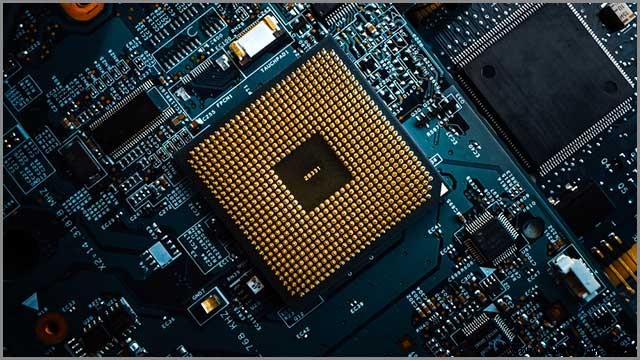
(CPU プロセッサ ソケットを備えたコンピュータ マザーボード)
4. IPC-6012 と IPC-A-600 の違い
以下のセクションで強調されているように、IPC-6012 と IPC-A-600 規格のいくつかの顕著な違いは注目に値します:
4.1 IPC-6012 は性能仕様です
IPC-6012 は、よりパフォーマンス仕様です。性能仕様である IPC-6012 は、PCB の各クラスに必要な仕様に加えて、デフォルトの要件を定義します。
4.1.1.分類:クラス 1、クラス 2、およびクラス 3
クラス 1 は、限られた寿命と「単純な」機能で構成される一般的な電子ボードです。これらの単純な機能は、リモコンなどのデバイスに見られる機能です。クラス 2 は、専用の電子製品用です。ここでは、ボードの寿命がある程度延びることが期待できます。つまり、コンピューター、エアコン、またはテレビ画面で使用できます。最後に、クラス 3 の製品があります。これらは、クラス 1 および 2 ボードに比べてわずかに厳しい不寛容です。それらは信頼性の点で高く、医療および軍事産業全体に多くの適用性があります。
4.1.2 IPC-6012 の仕様
以下は、注目に値する IPC-6012 の固有の仕様の一部です:
次元
仕様または図面で指定されていない限り、プリント回路基板は、IPC-6012 規格で必要な最小寸法を満たす必要があります。
はんだ付け性
はんだ付け性とは、金属が溶融はんだにどれだけ速く濡れるかを指します。 IPC-6012 規格によると、プリント回路基板のすべてのバッチははんだ付け性試験を受ける必要があります。 IPC-6012 規格によると、はんだ付け性の悪さは重大な欠陥です。
ビジュアル
目視検査は、すべてのプリント回路基板にとって必須です。製品リリース前に、目視検査または最終品質チェックが必要です。特に指定のない限り、すべてのパネルは目視検査を受けます。
導体の幅と間隔
導体の幅と間隔は、隣接する 2 つの銅線フィーチャ間の最小エア ギャップを表します。通常、導体と幅の間隔の要件は、0.007 インチ未満にする必要があります。 0.007 インチより大きくても小さくても標準以下です。
導体表面
クラス 2 およびクラス 3 のプリント回路基板の電圧面では、ピンホールと切れ目は許容されます。ただし、最長寸法が 1.0 mm を超えてはなりません。さらに、片面あたり 4 つを超える導体面があってはなりません。
清潔さ
IPC-6012 規格によると、清潔さは必須です。ここでは、ソルダー レジスト コーティングを適用する前に、すべてのプリント回路基板をきれいにする必要があります。汚染物質を含む汚れた基板を市場に出してはなりません。ソルダーレジスト塗布前後の洗浄は必須です。
構造的完全性
IPC-6012 規格によると、すべての PCB が満たさなければならない構造的完全性の側面がいくつかあります。 IPC-6012 規格に基づいて、すべてのプリント回路基板は、特に熱ストレスを受けた評価テスト クーポンの場合、構造的完全性の要件を満たす必要があります。
4.1.3 生産設計のプロセス
IPC-6012 規格は、PCB の生産設計に取り入れるべきプロセスを指定しています。ここでは、ランド全体と間隔の仕様が推奨公差内にある必要があります。さらに、ドリル穴は、必要なサイズと品質の要件を満たす必要があります。はんだマスクの仕様も、推奨される許容範囲内に収まる必要があります。
4.1.4 パフォーマンス要件がより正確に
IPC-6012 規格に関して言えば、パフォーマンス要件はもう少し正確です。性能要件に関しては、ユーザーはサプライヤーが原則として何を提供する必要があるかを考慮する必要があります。また、使用されている素材の種類と、その機能を証明するためにボードが受けたテストも示しています。
4.1.5 プリント基板の寸法要件の内部検査:
穴のサイズ – IPC-6012 規格に基づくと、標準 PCB の穴のサイズは直径 0.8 mm です。ほとんどのメーカーは通常、0.040 インチ (正確には直径 1.00 mm) の穴を推奨しています。
パターン精度とパターン特徴精度 – パターン精度は、ユーザーの移動の規則性を実際のユーザーの移動に合わせて調整します。パターン精度のレベルを上げると、ユーザーの移動パターンが改善されます。 IPC-6012 規格に関しては、パターンの精度とパターンの特徴の精度が不可欠です。 PCB 内のすべてのウェイは、常に互いに調和している必要があります。
環状リング ブレークアウト (内部および外部) – 環状リングの主な目的は、銅配線とビア アトムの間に良好な接続を確立することです。環状リングは、回路のアンカーとして機能します。 IPC-6012 は、アニュラー リング ブレークアウトに関する仕様があります。
環状リングのブレイクアウトは、設計段階でリングの幅が不十分なために発生します。 IPC-6012 規格によると、アニュラー リングの最小幅は 0.007 インチである必要があります。これにより、内部および外部の両方のブレイクアウトが防止されます。
4.1.6 PCB 構造の完全性を評価するために使用
プリント基板構造の完全性の評価に関しては、IPC-6012 規格。 PCB メーカーが注意を払う必要がある IPC-6012 の下での完全性の問題には、以下が含まれます:
メッキの完全性とボイド
堆積に関する問題は、プリント回路基板の穴壁内の相互接続を損なう可能性があります。最終的には、プリント回路基板が故障するか、期待どおりに機能しなくなる可能性があります。
ラミネートのボイドとクラック
ラミネートのボイドと試みは、PCB 製造中の一般的な問題です。ラミネートの穴は、通常エポキシ樹脂を含むべき領域にエポキシ樹脂が存在しないことです。一方、PCB 内のクラックは、応力が上昇する過程で発生する可能性があります。
これは、熱的または機械的に発生する可能性があります。 IPC-6012 標準ドキュメントには、ラミネートのボイドやクラックを最小限に抑える、または回避する方法に関する仕様が記載されています。
剥離
剥離は、材料が層状に破砕することを特徴とする故障モードです。 IPC-6012 文書には、層間剥離を回避する方法に関する対策が含まれています。層に分かれるのを避けたい場合は、適切な材料が必要です。
ハッチバック
ハッチバックは、ドリルで開けたビア ホールの側壁からエポキシ樹脂を除去するプロセスです。そうする理由は、プリント回路基板の層間に優れた電気的接続性を確保するためです。
IPC-6012 規格では、必要に応じて、使用するエポキシ樹脂を簡単に除去できる必要があります。エポキシ樹脂材料は、除去が必要な場合に簡単に取り除くことができるものでなければなりません。レイヤー間の優れた電気的接続を維持することは、信号ルーティングにとって不可欠です。
スミア除去
In the manufacture of printed circuit boards, smear removal is necessary. The purpose of conducting smear removal is to get rid of smear on the hole wall to allow the formation of electrical connections in the circuit’s inner layer.
Additionally, smear removal enables the construction of adequate hole wall adhesion. Based on IPC-6012 standards, smear removal is necessary before through-hole plating.
Hole breakouts, internal and external
Hole breakouts, both internal and external, are conditions where the land doesn’t surround holes. The Hole breakouts are problems that a lot of manufacturers face when manufacturing PCBs. Hole problems can occur both internally and externally on a printed circuit board.
Lifted pads
On a printed circuit board, lifted places may occur. Raised pads do occur as a result of a combination of physical and thermal issues. If the cushions don’t sit correctly, they may bring about the failure of parts of the PCB or the entire PCB.
Lifted pads naturally happen when attempting to de-solder parts/components from the board. It may also occur if you overwork the joint to an extent where adhesive bonds between the board and the copper are damaged.
Plating thickness
Plating thickness is essential in the production of PCBs. When it comes to circuit boards, consistency matters a lot. Plating thickness is a necessary standard for circuit boards. While there’s an official plating thickness standard, there are sizes that are highly common and preferred by manufacturers.
Based on IPC printed circuit board standards, the plating thickness should be 1.57 mm, or approximately 0.062 inches. Even though today’s PCBs’ design and manufacture tend to be smaller, the plating thickness remains the most common thickness for almost all formats.
Today, it’s more accurate to say that there’s a range of standard or typical PCB plating thickness. Some of the most common ones include 0.0031 inches (0.78 mm), 0.093 inches (2.36 mm), and 0.062 inches (1.57 mm).
Foil thickness, internal and external
On printed circuit boards, copper foils act as the base copper thickness applied on inner and outer layers. The IPC standards allow up to a maximum of 10% reduction in foil thickness.
According to IPC-6012 standards, foil thickness (both internal and external) matters a lot. A majority of printed circuit board manufacturers typically use sheets of ½ oz.
Metal cores
A metal core printed circuit board is a type of a PCB consisting of metal materials as its base. The purpose of using metal is to ensure the diversion of heat away from some of the board’s most critical components. Some of the essential areas include the metallic core and the metal heatsink.
IPC-6012 standards indicate that evenly distribution of layers must be on every side of the metalcore in multilayer PCBs. As an example, in a 12-layer board, the metal core must be at the center consisting of 6 layers at the bottom and six layers of the metal core at the top.
4.1.7 Features
As mentioned earlier, IPC-6012 standards are more of a performance specification standard. IPC-6012 standards define default requirements in addition to the specification requirements necessary for each class of printed circuit boards. Some of the essential features here include matters to do with cleanliness, solderability, and conductor surfaces, to mention but a few.
4.2 IPC-A-600 inspection documents
As mentioned earlier, IPC-6012 differs from IPC-600 in several ways. Just like IPC-6012 standards, there are IPC-A-600 standards that PCB manufacturers must comply with at all times. IPC-A-600 has standards for PCB artistry. The IPC-A-600 document consists of comprehensive acceptance criteria for acceptable, target, and nonconforming conditions on bare PCBs.
As mentioned earlier, the IPC-A-600 is IPC’s most widely used standard that IPC has managed to publish. Such makes the IPC-A-600 a natural choice for certification. As mentioned earlier, IPC-6012 standards differ from IPC-A-600 standards. The following are some IPC-A-600 standards that make it different from IPC-6012 standards:
4.2.1 Have a lot of pictures and drawings
The IPC-6012 doesn’t contain plenty of photos and graphics. Photographs and illustrations are necessary when it comes to the design and manufacture of PCBs. The difference is that IPC-6012 doesn’t contain plenty of pictures and photos, unlike IPC-A-600. Since IPC-A-600 contains many photographs and drawings, a lot of designers prefer it more than IPC-6012 standards.
If you want to design and manufacture IPC PCBs without a lot of trouble, then you may have to stick with boards that comply with IPC-A-600 standards. With such, you’ll get pictures of how to go about doing everything.
4.2.2 Designed for inspection purposes
IPC-A-600 standards give a printed circuit board assembler the information to do a quality job based on incoming inspection. IPC-A-600 emphasizes on design for inspection (DFI). Design for inspection is a principle of engineering proposing that inspection measurements and methods used in conformity certification require early consideration in product design.
Knowing acceptable conditions means that assemblers won’t have to dig deeper into their pockets if product recalls happening. Getting to know nonconforming conditions save printed circuit board assemblers from costly component mounting operations.
When it comes to PCBs’ design and manufacture, IPC-A-600 emphasizes a lot on Design for Inspection (DFI). Among other things, Design for Inspection in the design and manufacture of PCBs brings about lower costs and high-profit margins. The inability to consider matters to do with Design for Inspection (DFI) can come with high buried costs.
4.2.3 Features
Just like IPC-6012, IPC-A-600 has got some features too. Some of the components or requirements here include plated through-hole requirements, etched dielectric material standards, resin recession, and matters to do with voids.
5. How to choose IPC-A-600 or IPC-6012 standard
Most printed circuit board designers seem confused when it comes to choosing between IPC-A-600 and IPC-6012 standards. But the choice between the two depends on the size and the requirements of your project. Manufacturers must comply with several comprehensive inspection specifications found in IPC standards. Designers also need to be careful regarding the design rules required across IPC standards.
IPC-A-600 and IPC-6012 are two of the most primary guiding documents, also going by the name performance and inspection documents. The IPC-6012 is the specification, with the IPC-A-600 being the visual representation of the IPC-6012 form. Here are a few essential things to note when it comes to choosing between IPC-A-600 and IPC-6012 standards:
Both standards are essential to get a high-quality PCB product
The Both IPC-A-600 and IPC-6012 are crucial when you want to get high-quality PCBs. Both of them have features and specifications that PCB producers must satisfy.
Even though IPC-A-600 may contain superior standards compared to IPC-6012 standards, both are essential for producing high-quality PCBs. The choice between the two depends on the magnitude and requirements of your project.
Product choice
As the name suggests, product choice involves choosing or selecting the best product among the available options. Depending on the standards used when making a PCB, you’ll undoubtedly have to choose between a PCB made in compliance with either IPC-6012 or IPC-A-600 standards.
For the best-printed circuit boards, you may have to go with those manufactured under IPC-A-600 standards. The IPC-A-600 standards are slightly superior to IPC-6012 measures. As you may be well aware, the IPC-6012 is a specification that establishes and defines the performance and qualification requirements needed for the fabrication of rigid printed circuit boards.
IPC-6012 determines the desired rigid board requirements
IPC-6012 for selecting the printed circuit board’s desired size. The conditions here do apply to almost all types of PCBs.
The types of PCBs here include multilayer PCBs, single-sided, active/passive PCBs, HDI, and metal core PCBs. Being a performance specification, the IPC-6012 defines the default requirements in addition to the specifications required.
IPC-A-600 standards find heavy use for upcoming inspection specifications
IPC-A-600 standards are slightly superior to IPC-6012 measures. They are used specifically for upcoming specifications on a printed circuit board.
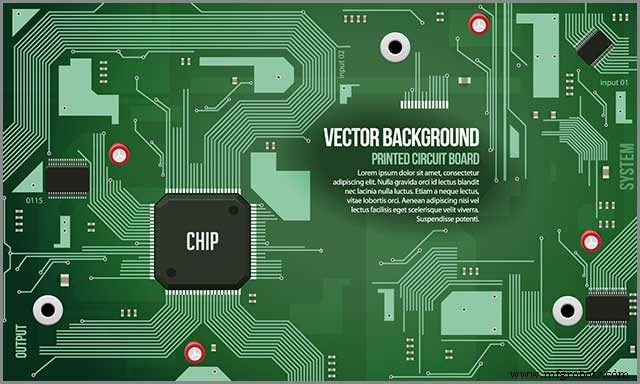
(Printed circuit boards and chips)
6. IPC 6012– Determine product acceptance criteria with suppliers
Acceptance criteria are the conditions that a product must satisfy or meet to be accepted by customers, users, or other stakeholders. In other words, these are some pre-established requirements or standards that a particular product must meet. IPC-6012 and IPC-A-600 determine product acceptance criteria with suppliers. They consist of measures and means that a product must meet to be deemed acceptable.
For instance, the IPC-A-600 and IPC-6012 contain several acceptance quality levels that determine the maximum number of defective units, beyond which a batch may face automatic rejection. Acceptance limits determine how many samples need to be picked and put under inspection and the boundary between refusal and acceptability for defective products.
Additionally, IPC-A-600 and IPC-6012 have several guides that manufacturers use to provide a standard methodology for inspecting the printed circuit boards. A product must meet some aspects:cleanliness, solderability, conductor width, and spacing, to mention but a few.
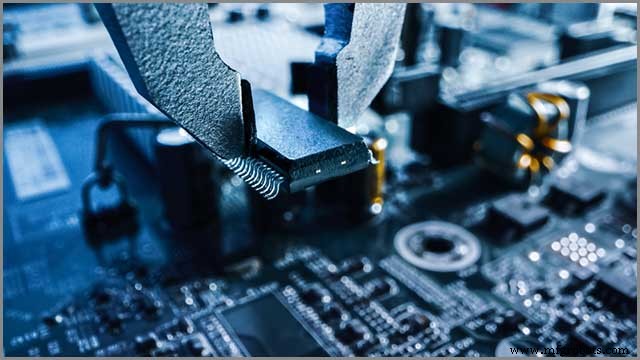
(Advanced PCB board that meets IPC regulations)
まとめ
Almost all printed circuit board manufacturers claim to be IPC-6012 or IPC-A-600 compliant. Most claim to have the ability to manufacture boards that meet any of the classes. But not all of them are who they say they are. But we at WellPCB are IPC-6012 and IPC-A-600 compliant. We employ IPC-6012 to establish the requirements of our printed circuit boards.
We also use IPC-A-600 for upcoming inspection specifications. Contact us for more information and other capabilities that we have. If you want to know more about our level of quality and certifications, then give us a call. We would be delighted to schedule an informative tour for you.
産業技術



